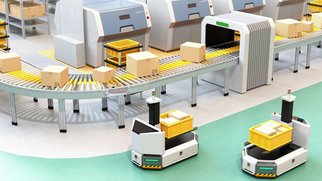Cyber Physical Systems
Cyber-physical systems are based on embedded software and have the ability to access and change properties of the real world by using sensors and actuators. In addition, cyber-physical systems are connected with one another through global networks like the Internet. Together with available content and services on the World Wide Web, they build networks of systems (“Systems of Systems”) that directly interact with the physical world. Within these networks, cyber-physical systems collaborate with one another to achieve an overall purpose of its users.
The additional benefit that cyber-physical systems provide will lead to radical changes in many application fields (e.g. energy, mobility, healthcare) and will have an impact on our daily lives and how they are affected by software. In the future, for instance, networks of cyber-physical systems in mobility management will enable us to use our limited energy resources more efficiently, allow reducing environmental pollution, and facilitate preserving the physical integrity of human beings.
Due to the growing pervasion of cyber-physical systems, the amount of sensors and actuators in our living environments will dramatically increase in the medium to long-term. Driven by the seamless integration of cyber-physical systems, this will in turn lead to entirely new opportunities to make our daily lives more comfortable and safe, while at the same time protect our environment and the world in which we are living.
Research Topics
- Model-based Engineering of Cyber Physical Systems
- Dynamic collaboration ("Systems of CPS")
- Uncertainty in open dynamic environments
- Context-awareness and runtime adaptation
- Cyber Physical Systems in 'Industry 4.0'
- DevOps for trustworthy Cyber Physical Systems


